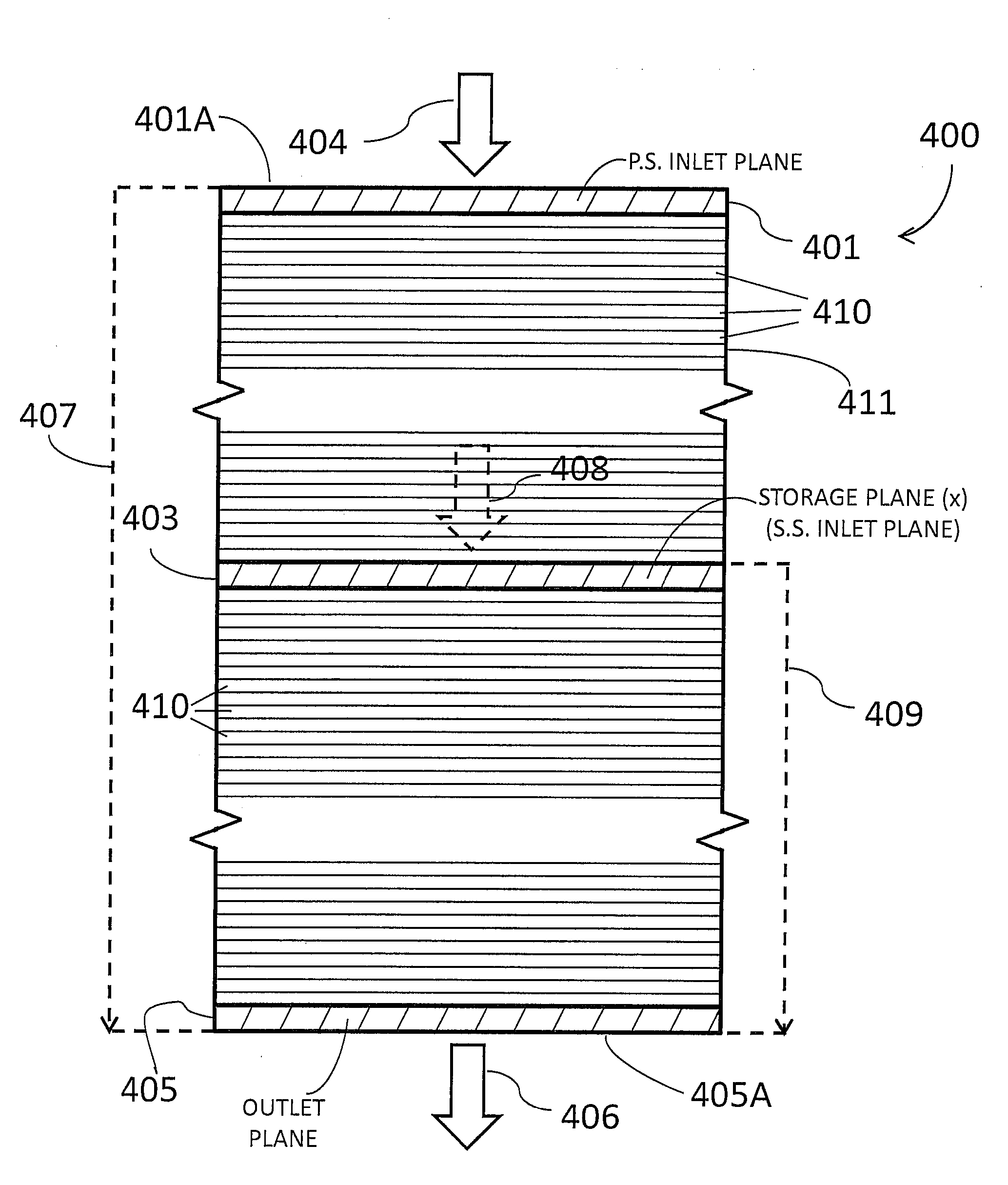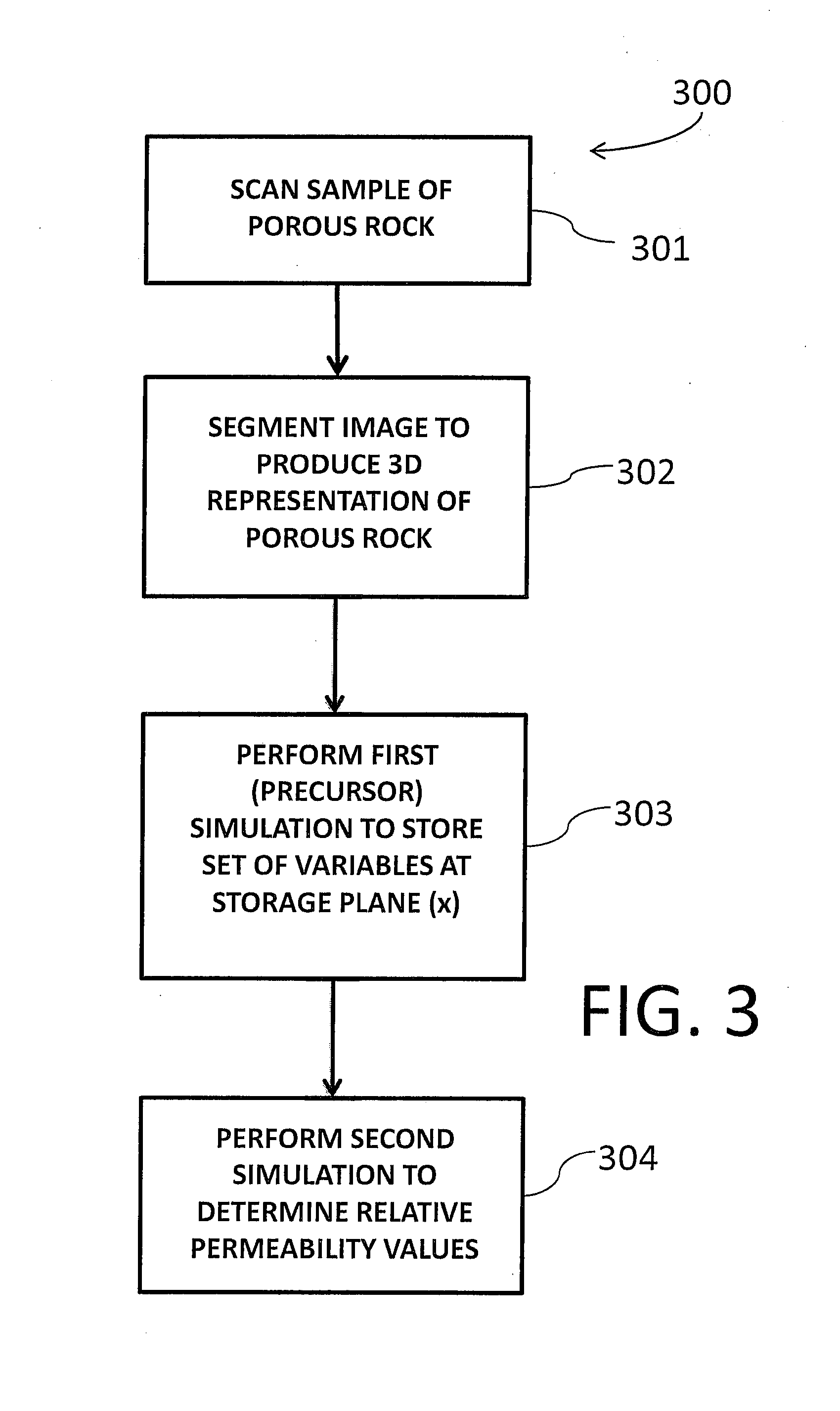Method For Evaluating Relative Permeability For Fractional Multi-Phase, Multi-Component Fluid Flow Through Porous Media
- Summary
- Abstract
- Description
- Claims
- Application Information
AI Technical Summary
Benefits of technology
Problems solved by technology
Method used
Image
Examples
Embodiment Construction
[0053]The present invention relates in part to a method for computing relative permeability for fractional multi-phase, multi-component fluid flow through a porous medium. The method can employ a three-dimensional (3D) digital representation of a porous medium integrated with a computational fluid dynamics (CFD) method of calculating fractional flow rates, pressures, saturations, internal velocity vectors, and / or other flow parameters, which can provide improved determinations, e.g., more rapid and / or accurate determinations, of fluid transport properties of the porous medium. These determinations of fluid transport properties can include calculating or estimating the relative permeability of wetting and non-wetting phases (fluids) in the porous medium. The present invention further relates in part to a method which integrates a single-phase-inlet precursor simulation used to evaluate distribution of pressure, saturation and velocity map (that are set of variables) at different satu...
PUM
 Login to View More
Login to View More Abstract
Description
Claims
Application Information
 Login to View More
Login to View More - R&D
- Intellectual Property
- Life Sciences
- Materials
- Tech Scout
- Unparalleled Data Quality
- Higher Quality Content
- 60% Fewer Hallucinations
Browse by: Latest US Patents, China's latest patents, Technical Efficacy Thesaurus, Application Domain, Technology Topic, Popular Technical Reports.
© 2025 PatSnap. All rights reserved.Legal|Privacy policy|Modern Slavery Act Transparency Statement|Sitemap|About US| Contact US: help@patsnap.com



